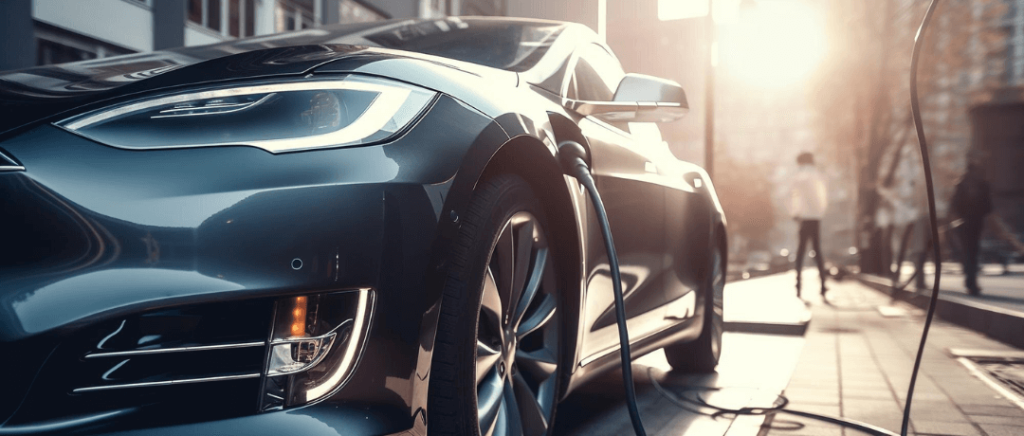Park only to recharge
Optimize use of charging stations for electric vehicles is crucial, not only to maximize the efficiency of the network, but also to respect other users. It's important to park at a charging station only to recharge your vehicle. Once the charge is complete, it's a good idea to move it to free up the space. three best practices that we recommend you :
- Respect the maximum recommended recharging time and do not occupy a terminal for longer than necessary.
- Select a charging station with the right wattage for your vehicle's charging capacity.
- If you're a company, don't hesitate to set up policies for sharing terminals (reservation system, user charter) between users to guarantee access for all your employees.
Quickly remove your electric vehicle once charged
Removing your electric vehicle from the charging station as soon as the charge is complete not only preserves the health of your vehicle's battery by preventing overcharging, it also frees up the station for other users who need it even more. So it's a good idea to :
- Monitor charging time and disconnect the electric vehicle when charging is complete (many chargers have timer functions).
- Charge the vehicle during off-peak hours (10 p.m. to 6 a.m.) to benefit from lower electricity rates and reduce the load on the grid.
- Keep therecharging infrastructure clean by cleaning up waste and reporting any malfunctions.
Make way for other users
Leaving room for other users after recharging is not only a matter of respect, but also ensures an optimal recharging experience for all. Charging stations must be accessible and meet everyone's needs fairly. This includes prioritizing the installation of charging stations in high-density residential areas and urban neighborhoods where residents and visitors frequent regularly.
Finally, efficient sharing of charging stations can be regulated by clear policies and management systems, such as mobile applications that display the availability of charging stations in real time. These tools enable users to plan their charging and avoid usage conflicts.
Use terminals with the right wattage for your electric car
For efficient recharging of your electric vehicle, it's essential to choose a charging station suited to your vehicle's capacity. Different charging levels exist, and it's important to select the most appropriate one for your vehicle:
- Level 1 (120 V): This is the slowest charge, using a standard 120-volt socket. Ideal for overnight charging at home, it is suitable for light electric vehicles or plug-in hybrids (PHEVs) that do not require fast charging. For example, a PHEV can be fully recharged in 5 to 6 hours.
- Level 2 (240 V): Offers faster charging with 240 volts, typical of domestic and public installations. This level can recharge a light electric vehicle from zero to full charge in 4 to 10 hours, which is convenient for daily use or charging while working. For example, a vehicle with a batteryrange of 480 km could be fully recharged in around 6 to 8 hours.
- DC fast charging This level uses high voltages for ultra-fast charging, ideal for long-distance journeys where time is a critical factor. For example, some models like theHyundai Ioniq 5 can be recharged from 22% to 80% in around 16 minutes.
It's crucial to select a charging station that matches not only the battery capacity of your electric car, but also your driving habits. If you mainly use your vehicle for short daily journeys, a Level 2 terminal might be sufficient. However, for longer journeys requiring rapid recharging, a Level 3 terminal would be more appropriate.
Indicate estimated recharge end time
When using electric vehicle charging stations, it's essential to indicate the estimated end time of charging, so that other drivers know when a station will be available. Certain key steps are necessary.
Calculate the time of its final recharge
To correctly estimate the charging end time, you need to consider two main factors: the capacity of your vehicle's battery and the power of the charging station used.
- Calculation of recharging time: Charge required (kWh) / Terminal power (kW) = Hours required for recharging.
Example: If a Tesla Model 3 with an 80 kWh battery is charged at a Level 2 terminal providing 7.68 kW and the car needs 60% more charge, the calculation will be :
- Load required = 80 kWh x 60% = 48 kWh
- Recharging time = 48 kWh / 7.68 kW ≈ 6.25 hours.
- Indicate your charging time on the terminal or app: these allow you to enter and display the estimated time of completion of charging. This enables subsequent users to plan their recharging or choose another terminal if necessary.
Our tips for better refill management
Given that factors such as temperature and battery condition can influence recharging speed, we recommend that you allow a margin when calculating recharging time to avoid any inconvenience. Dedicated applications for electric cars can help you monitor and adjust your recharge time according to the power available and your expected consumption.
Avoid charging at public terminals if you can charge at home
Charging at home is cheaper than using public charging stations. Residential electricity rates are lower than those charged by public charging stations, and you avoid the additional service charges that may apply at some public locations.
What's more, charging at home offers a level of comfort you can only find at home. You can charge your vehicle overnight, or at any time that suits you, without having to search for an available charging station. No more hassle of having to plan around charging station locations and, above all, dealing with queues at public charging stations, or full or broken-down charging stations.
Finally, an important point to consider is that frequent use of public fast chargers can accelerate the degradation of your vehicle's battery. While fast chargers are convenient for long journeys, for everyday use, it's best to stick to a slower, more regular charge at home, which can help prolong the health and longevity of your vehicle's battery.
So don't forget, if you have the option of charging your electric vehicle at home, this can offer you advantages in terms of cost, convenience and battery life. However, the installation and maintenance of a home charging station represents an investment, but often proves profitable in the long term.
Keep charging stations in good condition
There are a number of things you need to do to ensure that your charging stations work properly.
- Use charging cables and connectors with care, avoid pulling on the cables to disconnect them, and be sure to follow the instructions.
- Report problems promptly (e.g. damaged cable, obvious leak, system malfunction) to the station operator, or use the support functions.
- Keep the area around charging stations clean and free of debris, and if possible, clean up any small dirt.
- Follow the instructions provided by the charging station, including recommendations for parking and charging time.
- Avoid using fast-charging stations for frequent full charges if your vehicle supports lower-level charging.
Also read → Free recharging points, how to find them?





